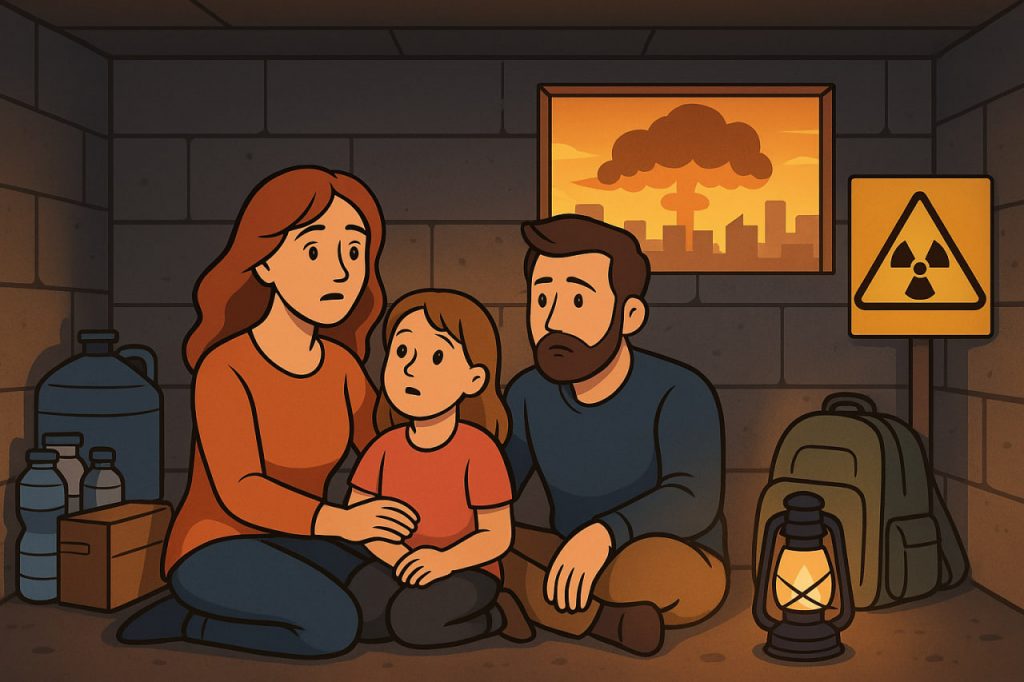Radiation emergencies, though rare, remain one of the most serious hazards that can threaten public health and safety. From nuclear accidents to deliberate attacks, understanding how to respond calmly and effectively can save lives. While governments and international organizations maintain complex emergency systems, personal knowledge and preparedness are equally crucial. Radiation is invisible and odorless, but its effects on the human body can be severe—making prevention and protection the most important defenses.
Understanding Radiation and Its Effects
Radiation is energy released in the form of particles or waves. It occurs naturally in sunlight, soil, and even the human body, but in high doses—such as from a nuclear explosion, power plant accident, or dirty bomb—it can cause serious health damage. The main types of ionizing radiation are alpha, beta, and gamma rays. Alpha particles are easy to block but dangerous if inhaled or ingested; beta particles can penetrate skin slightly, while gamma rays can travel through the body and require thick shielding like lead or concrete. Exposure can damage DNA, increase cancer risk, and cause radiation sickness if levels are high.
First Steps During a Radioactive Threat
If you learn about a radiation emergency through official alerts or sirens, act immediately. Follow these core principles summarized by safety experts as “Get Inside, Stay Inside, Stay Tuned”:
- Get Inside: Move indoors as quickly as possible—preferably into a building made of brick or concrete. Underground basements provide the best protection.
- Stay Inside: Close windows, doors, and ventilation systems to minimize radioactive particles entering. Stay away from exterior walls and roofs.
- Stay Tuned: Listen to official updates from emergency services through battery-powered radios or phones. Do not rely on rumors or social media.
Time, distance, and shielding are key elements of radiation protection—the longer you stay sheltered, the safer you are.
Decontamination and Safety Practices
If you suspect radioactive particles on your clothes or skin:
- Remove outer clothing carefully and seal it in a plastic bag. This step alone can eliminate up to 90% of contamination.
- Wash your skin and hair thoroughly with soap and warm water. Avoid using conditioner, as it can trap radioactive particles.
- Avoid eating, drinking, or smoking until you have cleaned yourself.
- Follow health authority instructions for medical check-ups or iodine intake, if recommended. Do not self-medicate.
Health experts emphasize that potassium iodide (KI) protects only the thyroid gland from radioactive iodine—it does not shield against other radioactive materials. It should be taken only under professional guidance.
Building a Personal Emergency Kit
Preparedness is essential. A radiation emergency kit should include:
- A battery-powered or hand-crank radio for official updates.
- Sealed bottled water and non-perishable food.
- A first-aid kit and basic medicines.
- Flashlights and extra batteries.
- Plastic sheeting, duct tape, and scissors for sealing rooms.
- Personal hygiene items and masks.
- Copies of identification and important documents in a waterproof pouch.
Experts recommend keeping supplies to last at least 72 hours, as emergency services may need time to reach affected areas.
Expert Opinions on Preparedness
According to Dr. Brooke Buddemeier, a radiation health physicist at Lawrence Livermore National Laboratory, “Sheltering in place is the single most effective action people can take during a radioactive fallout.” He explains that even simple barriers like walls or soil can reduce radiation exposure by up to 90%. Similarly, the World Health Organization (WHO) emphasizes coordinated communication and psychological support during radiation crises, as panic can cause more harm than exposure itself. Maintaining calm, rational decision-making is key to survival.
Common Myths and Misconceptions
Public fear often fuels misinformation during emergencies. Some people believe that gas masks or wet towels can block gamma radiation—this is false. Only thick, dense materials provide real protection. Others think evacuation is always the best option, but leaving shelter too soon can expose individuals to dangerous fallout. The half-life of many radioactive particles decreases rapidly, meaning radiation levels can drop significantly after just 24–48 hours of staying indoors.
Long-Term Health and Environmental Effects
Radiation exposure can damage cells and tissues, leading to acute conditions such as nausea, fatigue, and burns in high doses. Over time, it increases the risk of cancer and genetic mutations. The environment also suffers—radioactive contamination can persist in soil and water for decades, as seen in Chernobyl (1986) and Fukushima (2011). Scientists continue to monitor these regions to understand radiation’s impact on ecosystems. Nonetheless, strict safety protocols and rapid response systems have dramatically improved since past nuclear incidents.
Psychological Resilience and Community Action
Beyond physical safety, mental health plays a vital role in surviving radiation emergencies. Anxiety, uncertainty, and misinformation can overwhelm individuals. Psychologists recommend focusing on actionable steps—following trusted sources, helping neighbors, and maintaining routines. Community preparedness programs and drills can strengthen collective confidence and reduce panic.
Interesting Facts
- Radiation cannot be seen, smelled, or felt—it must be detected with instruments like Geiger counters.
- Just 10 centimeters of lead or 1 meter of concrete can block most gamma radiation.
- Staying indoors for 24 hours after fallout can reduce exposure by up to 99%.
- The first large-scale evacuation due to nuclear risk occurred in 1957 after the Kyshtym disaster in Russia.
- Even at Chernobyl, most long-term health effects came from ingestion and inhalation, not external radiation.
Glossary
- Ionizing Radiation – High-energy radiation capable of removing electrons from atoms, causing biological damage.
- Gamma Rays – Highly penetrating electromagnetic radiation emitted from radioactive decay.
- Fallout – Radioactive particles that settle to the ground after a nuclear explosion or accident.
- Decontamination – The process of removing radioactive materials from people or objects.
- Potassium Iodide (KI) – A stable iodine compound that protects the thyroid gland from radioactive iodine.
- Geiger Counter – A device used to detect and measure radiation levels.
- Half-Life – The time it takes for half of a radioactive substance to decay.
- Shielding – Using materials to block or absorb radiation.
- Radiation Sickness – A set of symptoms caused by high-dose exposure to ionizing radiation.
- Nutrient Synergy – The interaction of different nutrients working together to support health, often disrupted by radiation stress.


